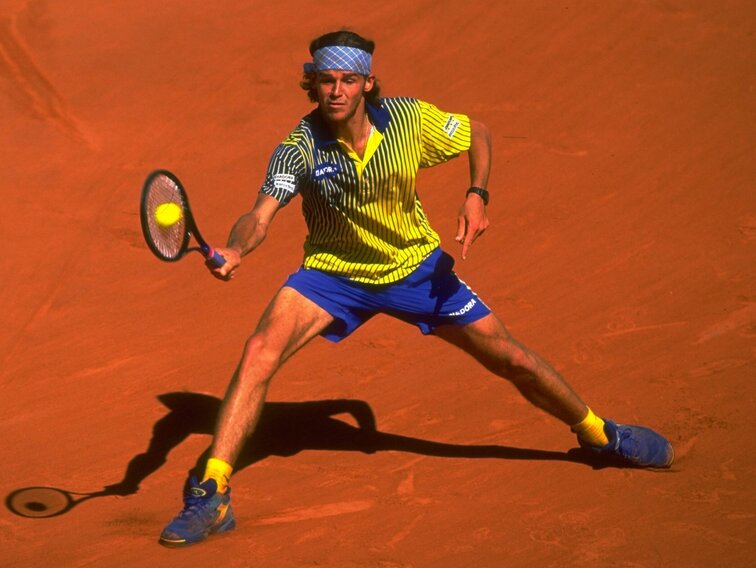How Gustavo Kuerten changed the world of tennis
In 1997 Gustavo Kuerten sensationally won the French Open as number 66 in the world. The novel polyester string that he was playing was soon to turn the tennis world upside down.
by Florian Goosmann
last edit:
May 04, 2020, 12:52 am

He came out of nowhere and took out one big name after another. Gustavo Kuerten's run had started with victories over Slava Dosedel and Jonas Björkman, but when he also fought Thomas Muster, the French Open winner in 1995, in five brutal sentences from the tournament, one could have guessed: this man may be dangerous. This was followed by two further five-set wins over Andrej Medvedev and defending champion Kafelnikov, a victory over Filip DeWulf and in the final over the two-time Paris champ Sergi Bruguera. And Roland Garros had a new favorite, the likeable curly head from Brazil with the canary shirt and wobble-dachshund head (which was also to win in Paris in 2000 and 2001). But above all, tennis was in a state of change.
Kuerten, like a few other pioneers at the time, was playing a polyester string - the Luxilon Original. So far, the gut string (for people with coal), the nylon string (for normal Otto tennis players) or the multifilament string (for arm-injured people) has been the measure of all things. But in the late 1990s and early 2000s, the yellow strings of the Kirschbaum company suddenly appeared in the home club, which the amateur player particularly appreciates because of their durability and which caused the stringer some pain in the fingers due to the rigidity.
The professional, however, appreciates something else: namely the overwhelming topspin, which he was able to create with his poly covering - thanks to the "snap-back effect". While maintaining control.
Polyester strings - good or bad for tennis?
Gradually, more and more professionals switched to poly, albeit at a distance. Andre Agassi described in his autobiography "Open" that he always played with a Kevlar / nylon combination. It was used to "pull a three hundred and fifty pound marlin out of the water. It never tears, never gives in, but neither can spin be produced. It's like hitting a ball with a garbage can lid." His then coach Darren Cahill suggested that he switch to poly in 2002. He did not hit a ball in the subsequent training session, nor in the following tournament. There is always talk of new racket technology, but the real change came from the strings. The polyester string "made sizes out of mediocre players and legends out of size," said Agassi.
Today (almost) every professional uses a "poly", which is now available in all variants and with the addition of new materials. And no longer quite as rigid and hard for the arm as when it started, but more elastic. Many appreciate a hybrid covering - half of the racket is covered with natural casing (for feel and power), the other with polyester (for spin and control). "With polyester you can stand further back and play with a greater swing. And a lighter racket to accelerate the club head more," says Darren Cahill . The sad side effect: The baseline lover can now pull through from all positions of the course without fear that the ball will land in the gang - to the detriment of the net player.
Whether the "poly" is good or bad for tennis remains a matter of opinion. The fine game and the development of the net players certainly suffered , tennis has become one-dimensional. The angular play of Rafael Nadal or the one-handed, full backhand of Dominic Thiem and Stan Wawrinka would have been hidden from us as well.
